Sousan-e Chehel Cheraagh: One of Iran's National Flowers
Sousan-e Chehel Cheraagh, scientifically known as Lilium ledebourii, is one of the rarest lilies in the world, found in only two habitats in Iran: Damash in Gilan province on the slopes of the Alborz Mountains, and a region in Ardabil province.
This stunning flower, recognized as Iran’s first national flower in 1976, blooms from early to mid-May and attracts countless visitors to its limited growing areas. Standing 50–150 centimeters tall, its delicate white petals gradually turn green at the base, with purple tepal-tips and vibrant red pollen, creating a truly mesmerizing sight.
To witness the short-lived bloom of Sousan-e Chehel Cheraagh, a trip to Damash village is essential. Nestled in the lush Alborz Mountains, this area offers breathtaking natural scenery, cool mountain air, and delicious local cuisine, making it one of Gilan's most popular destinations. Join us as we explore this unique flower and the picturesque route to Damash, where nature's beauty is on full display.
What is Iranian Lilium ledebourii?
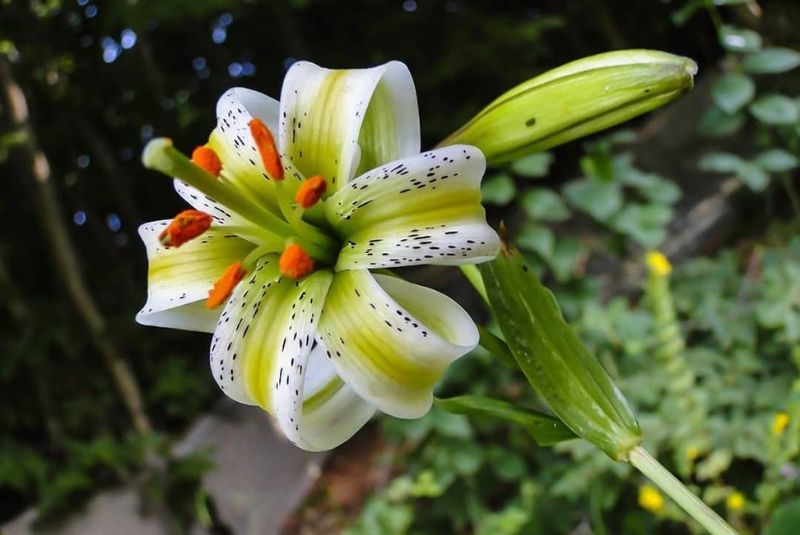
Sousan-e Chehel Cheraagh (Lilium ledebourii) is one of the rarest species in the lily family, known for its stunning beauty and unique characteristics. Standing between 50 to 150 centimeters tall, this extraordinary flower blooms in its final 7 centimeters, covered with delicate blossoms.
Originating from the Quaternary geological period, it is considered a genetic marvel and a rare natural treasure. Unfortunately, its reluctance to reproduce widely puts Sousan-e Chehel Cheraagh at risk of extinction, causing concern among environmental experts.
This resilient herbaceous plant is the only Iranian species in the lily family and rivals the beauty of more commonly cultivated lilies. Known for its bright, inverted flowers with outwardly curving petals, its purple-streaked petals are fragrant, filling the air with a distinct aroma. Each stem can produce between four and ten flowers, with some rare specimens boasting as many as fifteen.
The bulbs of Sousan-e Chehel Cheraagh are oval, yellow in color, and can reach a diameter of five to seven centimeters. The strong, upright stem supports vertical leaves, edged with fine hairs.
The symmetrical flowers have pointed bracts beneath them and are made up of six sturdy petals, resembling a chandelier or crown in form. While the overall color of the flower is white, it transitions to green and hints of purple at the edges, adding to its charm. With its rare status and breathtaking appearance, Sousan-e Chehel Cheraagh remains one of Iran's most treasured natural wonders.
When was the Iranian Lilium ledebourii Discovered?
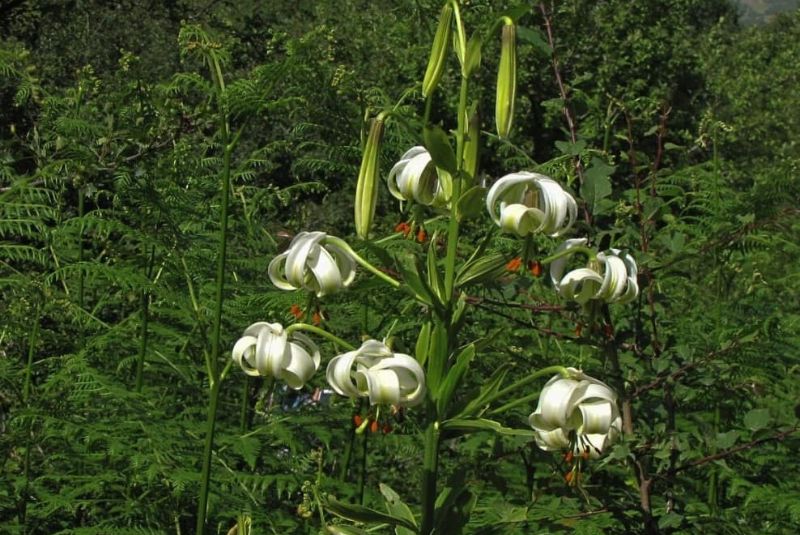
The stunning Sousan-e Chehel Cheraagh flower was first discovered by a German botanist named Karl Friedrich von Ledebour in 1975 in the village of Damash, located in Gilan Province, Iran.
Following its discovery, Ledebour mentioned this rare and unique flower in his book "Flora Orientalis," which explores the plant life of the Eastern regions. In recognition of his contribution, the flower was scientifically named Lilium ledebourii in his honor.
Shortly after its discovery, the Iranian Supreme Council of Environmental Protection submitted a request to the government to recognize the flower as a national natural monument.
As a result, in 1976, Sousan-e Chehel Cheraagh became the first natural heritage item to be officially registered in Iran's list of national treasures. This designation highlights its significance and the ongoing efforts to protect and preserve this endangered species.
Why is it Called Sousan-e Chehel Cheraagh?
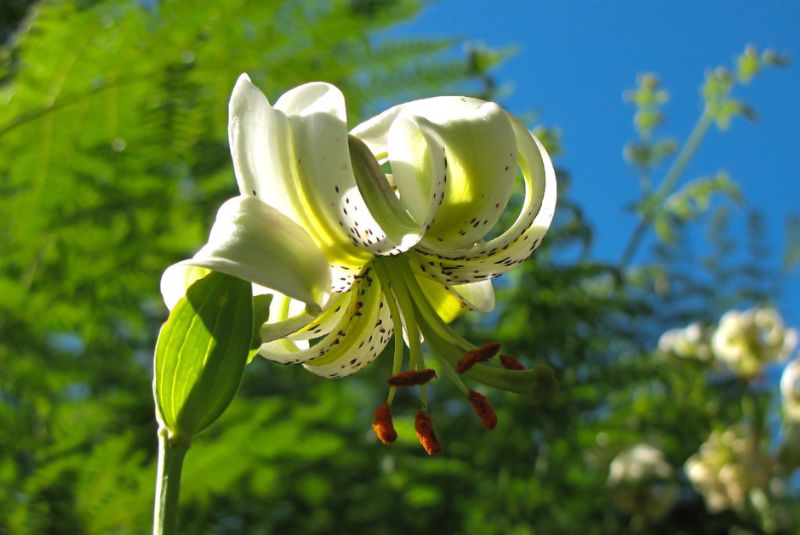
The name Sousan-e Chehel Cheraagh (Lily of Forty Lanterns) is believed to be inspired by the flower's resemblance to a chandelier. With its curved petals and outward-facing stamens, the flower droops gracefully towards the ground, evoking the image of a glowing chandelier. Additionally, local legends suggest that the flower emits light at night, which is another reason for its unique name.
In fact, the stamens of Sousan-e Chehel Cheraagh contain fluorescent compounds that allow the flower to reflect light, adding to the mystical aura surrounding it. This natural phenomenon has fueled the belief that the flower illuminates the night, further enhancing its beauty and mystery.
Where Does Iranian Lilium ledebourii Grow?
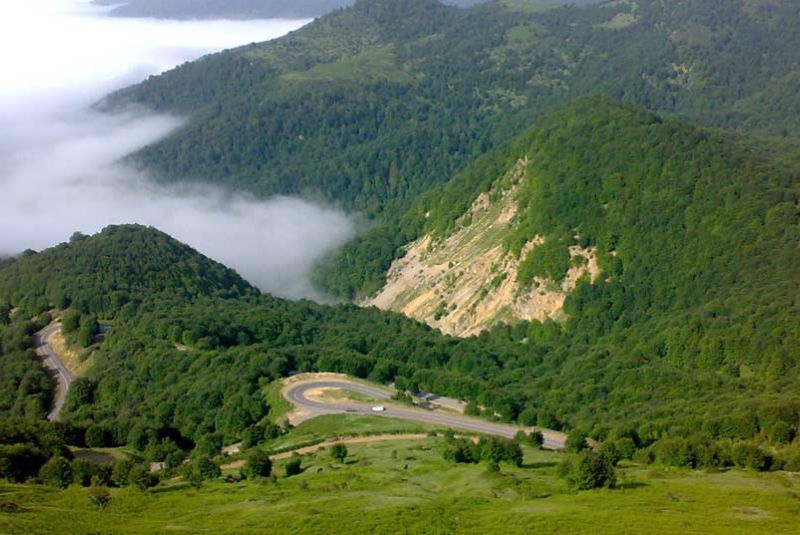
Sousan-e Chehel Cheraagh (Lilium ledebourii) was once found in seven scattered regions across Iran, including areas such as Rudbar, Damash, Talesh, and the village of Sarshemam Rostamabad in Gilan province.
It also grew in mountainous areas like Polam Jan Ramsar, Tilakenar, Khorma Chal Abbasabad, Dohezar Tonkabon, and the heights of Bandpey Sharqi in Mazandaran province, as well as in Ardabil. Unfortunately, due to a lack of proper attention and conservation efforts, this rare and unique flower has become endangered.
Outside Iran, Sousan-e Chehel Cheraagh has only been sighted in the Lankaran region of Azerbaijan, which historically was part of Iranian Talesh. Thus, this flower can be considered an endemic species of Iran.
In recent years, Sousan-e Chehel Cheraagh has been rediscovered in regions like Mazandaran and Ashkorat Rudbar, sparking hope for its revival. With increased government attention and the creation of protected areas, this rare flower may thrive once again in Iran's lush plains.
The densest growth of Sousan-e Chehel Cheraagh, with around 2,000 specimens, can be found in a small section of degraded beech forests near Damash, at an altitude of 1,700 to 1,900 meters. This four-hectare region is now recognized as a protected area, giving the flower a better chance of survival and continued blooming in the future.
Blooming Season of Sousan-e Chehel Cheraagh
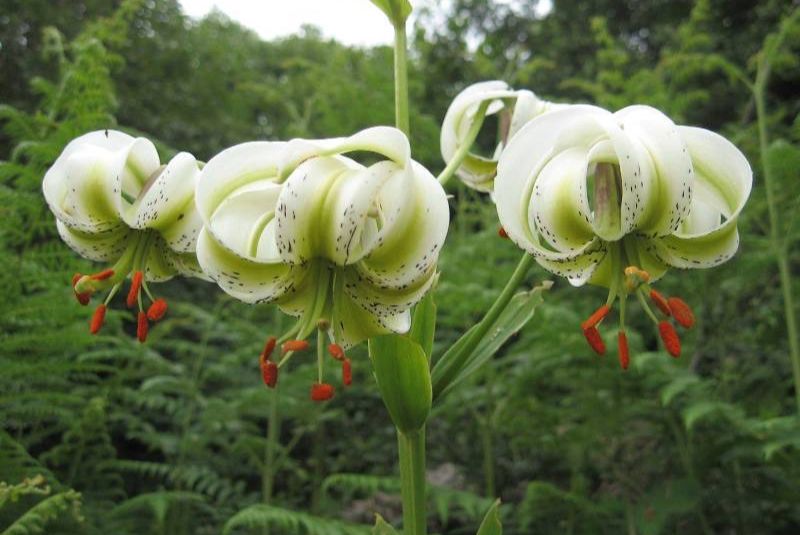
Sousan-e Chehel Cheraagh begins its blooming process in early June, with the flowers reaching full bloom by mid-June. However, these delicate blooms have a short lifespan, lasting only until mid-July.
As a result, the best time to visit and witness the beauty of this rare flower is between mid-June and mid-July. Visitors should plan their trips accordingly to experience the breathtaking sight of this endangered species in its natural habitat.
Damash Village

Damash village, located in the Amarlo district of Rudbar County, southeastern Rudbar, offers a unique blend of natural beauty and cultural heritage. With an average annual temperature of 10°C and rainfall of about 450 mm, Damash has a semi-humid and temperate climate.
Besides the rare Sousan-e Chehel Cheraagh, other plants such as elderberry, nettle, violet, various ferns, dandelions, wild clover, and hawthorn thrive here. The village provides the perfect conditions for Sousan-e Chehel Cheraagh, which requires a dry, sunny environment with well-drained soil.
In the past, Damash was a summer retreat where the people of Jirandeh migrated during the warm months. Today, it is home to permanent residents who speak the Deylami dialect.

The name Damash is derived from two words in the Kermanji dialect, meaning “giving mash to someone.” Agriculture, poultry farming, and animal husbandry are the main sources of income for the locals.
Visitors to Damash should not miss out on buying local handicrafts like handwoven socks and rugs, as well as fresh produce such as walnuts and hazelnuts. While there are no hotels or guesthouses in the village, tourists can either camp in nature or opt for village homestays or private villas.
After marveling at the Sousan-e Chehel Cheraagh, many choose to stay in nearby towns, making Damash a perfect destination for nature lovers seeking tranquility and unique experiences in Iran.
The Habitat of Iranian Lilium ledebourii in Damash
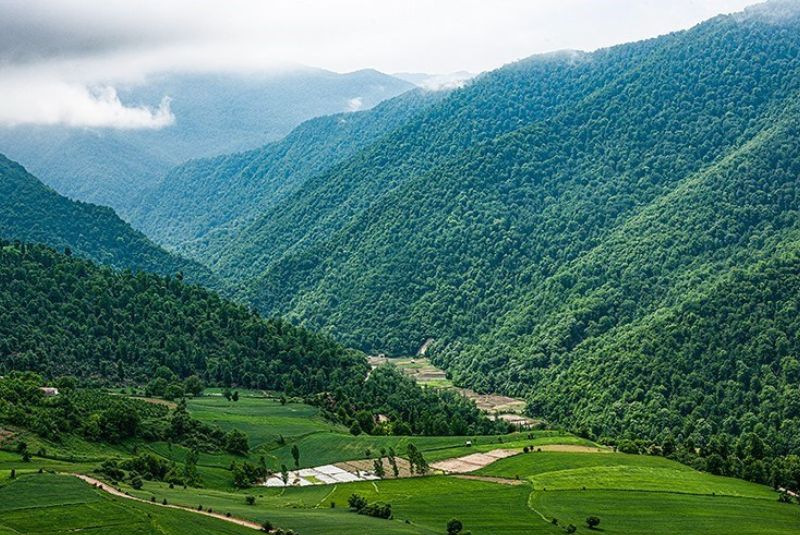
The Sousan-e Chehel Cheraagh grows in a protected area in Damash, Gilan Province, where conservation efforts have been implemented to safeguard this rare and endangered flower.
Spanning four hectares, the protected habitat includes a fenced area to prevent unauthorized access, a guard post, and signs to educate visitors about this national natural treasure.
Research is also underway to understand and encourage the natural reproduction of the flower, which is notoriously difficult to propagate. Additional land has been purchased to establish an environmental protection center, which will enhance conservation efforts in the future.
Declared a national natural monument in 1976, Sousan-e Chehel Cheraagh holds the distinction of being the first Iranian flower to receive this status. The Gilan Environmental Protection Organization is responsible for managing and safeguarding its habitat, which is one of the country's four protected areas. Access and any activities related to the flower are strictly controlled, with permits required from the Ministry of Environment and the National Inspection Office.
In recent years, researchers succeeded in cultivating the flower at the Lahijan Ornamental Plant Research Station. These cultivated flowers bloomed 20 days earlier than those in their natural habitat, offering hope that Sousan-e Chehel Cheraagh could eventually grow in other parts of northern Iran as well. This success marks a significant step forward in the efforts to preserve and propagate one of the world’s rarest flowers.
Sousan-e Chehel Cheraagh Festival in Damash
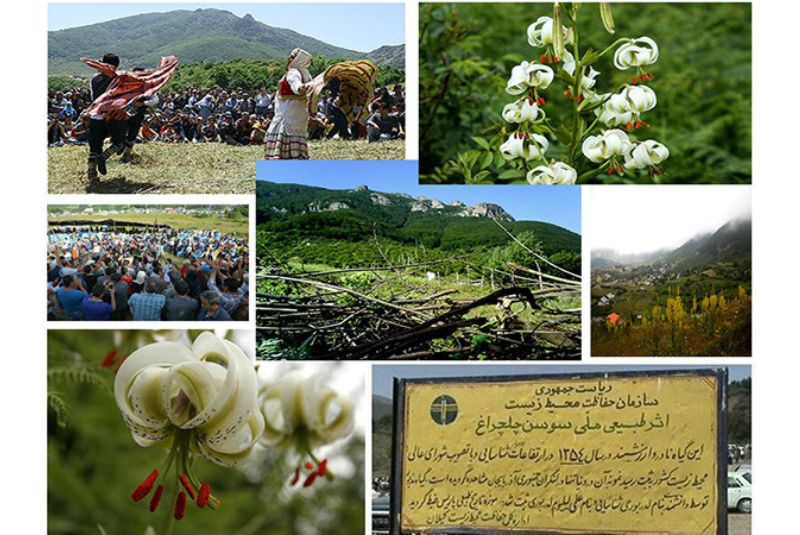
Every year, the Sousan-e Chehel Cheraagh Festival takes place in the village of Damash, coinciding with the blooming season of this beautiful flower. This vibrant event showcases local music, traditional dances, and native customs, making it one of the most enchanting spring celebrations in Gilan province. Each year, numerous domestic and international tourists attend to witness the festivities.
During the festival, the residents of Damash don hand-stitched traditional attire, engaging in joyful celebrations and dances. The festivities include various traditional games such as Khorpatak, Gileh-Mardi wrestling, tug-of-war, stick games, carousel, Tish playing, Halolk, Dour Be Charkhan, and Golfa, captivating the attention of visitors.
Don’t miss out on exploring the local markets during the blooming days. The lively atmosphere is filled with the sounds of traditional instruments like the Tambur, Santur, Kamancheh, Ney, and Tombak. Market stalls feature a variety of handicrafts, providing a glimpse into the local artistry and culture.
The Sousan-e Chehel Cheraagh Festival offers a unique opportunity to immerse yourself in the rich traditions of Damash while celebrating the beauty of this rare flower.
How to get to the Damash Village
The picturesque region of Damash, known for its stunning Sousan-e Chehel Cheraagh flowers, is located between Lushan and Manjil along the Roudsar to Tehran road. There are two main routes to reach this beautiful destination.
First Route
To access the blooming grounds of Sousan-e Chehel Cheraagh, travelers should start from Tehran heading towards Qazvin and then proceed towards Lushan. This journey leads to the narrow, rugged side road to Jirandeh.
The road is quite bumpy and winding, traversing arid landscapes with sparse vegetation. After approximately 42 kilometers of driving through various villages such as Sangarud, Kermak, Biyuzarin, and Pakdeh, you will arrive in Jirandeh.
From Jirandeh to the village of Damash, you’ll need to cover another 40 kilometers. This mountainous road features numerous ascents and descents but lacks any directional signage. It is highly advisable to either hire a local guide or ask residents and passing vehicles for assistance to locate this extraordinary flower's habitat.
Second Route
Alternatively, you can take the Qazvin-Rasht Highway, entering the Khorgam district at the start of Rostamabad. Khorgam is approximately 40 kilometers from the city of Roudbar.
While the Khorgam road is paved, it is also quite winding and receives minimal traffic. It’s best to travel with a well-equipped vehicle, a full tank of gas, and complete supplies.
As you pass through villages such as Sanres, Anar Kul, Cherah, Dashtvil, and others, you will finally reach the sign for the city of Barasar, which is just 6 kilometers from Damash. The road from Barasar to Damash is one of the most beautiful in Gilan, offering pleasant weather and stunning views as it weaves through the clouds.
Tips for Visiting Iranian Lilium ledebourii Habitat
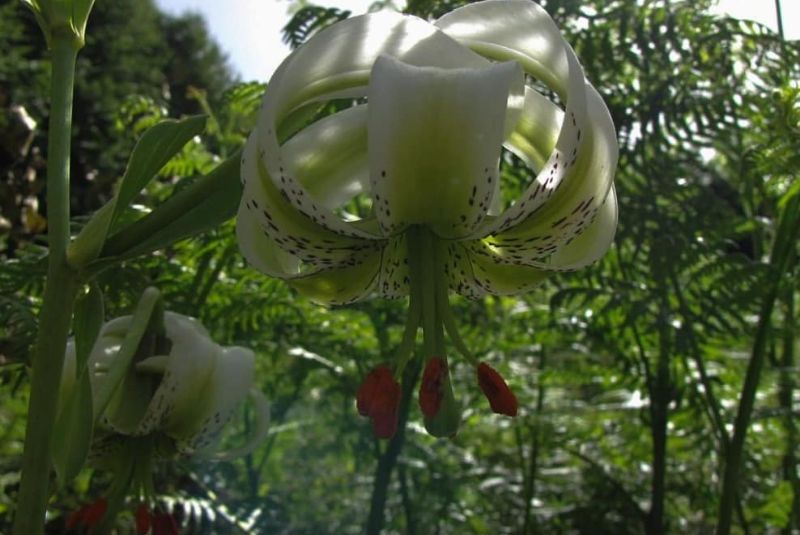
To visit the habitat of Sousan-e Chehel Cheraagh, you need to be accompanied by a guardian or have a valid entry permit. It’s important to note that damaging this flower within the protected area is prohibited, and uprooting any Sousan-e Chehel Cheraagh bulb incurs a fine of around 400,000 Toman.
When traveling to the mountainous region of Damash, ensure you wear suitable walking shoes and bring a hat, sunglasses, warm clothing, a windbreaker, raincoat, water, snacks, and provisions. If you plan to camp overnight, pack a sleeping bag or sleeping gear, warm clothes, a flashlight, personal utensils, and other camping equipment.
Bottom Line
Sousan-e Chehel Cheraagh, or Iranian Lilium ledebourii, is a rare and captivating flower found only in specific regions of Iran, particularly Damash in Gilan province.
Celebrated as Iran's national flower since 1976, it boasts striking white petals that transition to green with purple tips, blooming in mid-May. This stunning lily, endangered due to its limited habitats and challenging reproduction, thrives at altitudes of 1,700 to 1,900 meters in a protected area.
Visitors can experience its beauty during the annual festival in Damash, where local culture flourishes alongside nature's splendor. Plan your trip to witness this extraordinary gem in its breathtaking environment.
Share your story!
Comment below and let us know about your Experience.
Your story inspires others!


Comment
Leave a Comment